Modern trail bike suspension is a true marvel.
Seriously, just think about it for one moment. Recall your first suspended mountain bike and what the experience was like using the fork on there. Now fast-forward to 2016, and think about what your expectations are of a 130-160mm travel fork. Chances are that you expect it to be air-sprung, under 2kg, stiff enough for riding technical black diamond downhill runs, and for it to offer on-the-fly adjustable compression and rebound damping. You probably even expect it to be easy to remove the front wheel. Greedy bastard!
But really, we are very lucky with the kind of equipment choices we’re faced with in this day and age. Our long-travel trail bikes are capable of climbing the same trails that a superlight carbon hardtail flies up, but they’re even more capable of tackling the type of descents that would have been reserved for a dual-crown DH bike just a few short years ago.
But as our bikes and our riding progresses, so too do our expectations of our equipment. And so in 2016, it takes a lot to impress in the suspension department – particularly when you take into account the fact that the current market is dominated by an American duopoly.
So when an all-black, Italian-made, test fork arrives at your doorstep from Formula, you can’t help but feel a degree of scepticism, as well as intrigue.
Formula Suspension
Like me, you probably associate the Formula name with lightweight and powerful hydraulic disc brakes. More recently however, the Italian company has been leveraging R&D from its Moto division to produce high-end suspension forks as well. In fact, it was back in mid-2012 when Formula dropped their very first suspension fork; the 33 fork.
With its stiff chassis, air-sprung design and adjustable damping, the Formula 35 is lining up to take on the likes of the RockShox PIKE and the Fox 34.
Named after its stanchion diameter, the 33 was a 26” fork that delivered up to 120mm of travel in a lightweight XC-oriented chassis. I had the pleasure of testing out the original 33 fork when it first arrived in Australia, and despite it being an unknown quantity at the time, I came away impressed with its supple action and lively feel on the trail. Despite it being a good fork though, I’m still yet to see that many of them out on the trails.
Designed for longer travel machines, the 35 is the bigger and badder brother to the 33. It’s available in a 29” version with up to 140mm of travel, and in a 27.5” version with up to 160mm of travel. Each fork is also available in an extended (EX) version that adds another 20mm of travel for a minor weight penalty.
Over the past five months, I’ve been testing the 27.5” 35 fork with 160mm of travel. With its stiff chassis, air-sprung design and adjustable damping, the Formula 35 is lining up to take on the likes of the RockShox PIKE and the Fox 34.
Does it have what it takes?
A Leggy Italian
Just like their disc brakes, each 35 fork is built and assembled in their Prato factory in Italy. Formula places an emphasis on engineering to exacting tolerances, with complex laser-alignment tools used to accurately measure the inner diameter of the lower’s bushings, and the external diameter of the upper tubes. Once a match is found, they’re paired together to create a snug and seamless fit. I’m told that this adds significant time and cost to the manufacturing process, but Formula see it as necessary step to smooth slidin’.
the whole fork can be stripped down for maintenance with just a 4mm hex key
Of course manufacturing precision is one thing, but real-world reliability is another. To that end, Formula employs a drop-in damper cartridge that can be removed and serviced independently of the fork chassis. It also means that routine servicing is a lot less messy, as all of the damping oil is sealed inside the cartridge.
Speaking of servicing, the whole fork can be stripped down for maintenance with just a 4mm hex key. Formula even includes a bottle of Ballistol in the box for replacing the lower’s splash fluid when necessary. Ballistol (otherwise known as “Ballistic Oil”) is a mineral oil-based chemical that was originally developed for cleaning and lubricating firearms. Ballistol isn’t used in any other forks I’ve rebuilt, and it’s not a product that is easily available in Australia, so it’s nice that Formula include a bottle of it in the box. Apparently it’s a lot more common in Europe, and it should be noted that any distributor that sells Formula suspension should have spare fluid to purchase as well.
In terms of construction, the 35mm stanchions are made from hard anodized 7075 alloy, while the crown is hollow forged and externally relieved to reduce weight. One-piece magnesium lowers feature a chiselled-out arch and dedicated 15mm dropouts. The 15mm thru-axle uses a tapered end that is reminiscent of the Syntace X-12 design, which should help to reduce twisting of the lower legs. The lever for the axle is removable and merely acts as a 5mm hex key to tighten or loosen the axle. This is a neat feature if you have a bolt-up rear thru-axle that is also adjusted via a 5mm hex key, as the one lever will take care of both wheels.
The sealed damper occupies the right-hand fork leg, with the crown-end featuring the Satellite Switch Adjustment array that looks like it belongs more on a high tech Italian watch than a suspension fork. Damping adjustments come in the way of a blue compression dial, a gold lockout lever, and a black dial for adjusting lockout threshold. A red rebound dial is located at the base of the leg.
..our test fork tipped the scales at 1750 grams. This puts it at the same weight as a new Fox 34, and about 100 grams lighter than an equivalent RockShox PIKE
In the other leg you’ll find Formula’s unique hybrid spring system. The combination of a positive air spring and a coil negative spring isn’t unique, but the addition of a coil starter spring is. With just one dynamic seal, this spring design helps the fork ease into its travel for a smoother feel, while still offering the adjustability of an air fork.
Our 27.5” test fork came out of the box set at 160mm of travel, but the included plastic spacers can easily be added internally to reduce travel in 10mm increments down to 120mm.
With a chopped steerer tube and the starnut installed, our test fork tipped the scales at 1750 grams. This puts it at the same weight as a new Fox 34, and about 100 grams lighter than an equivalent RockShox PIKE.
Trail Time
Buttery. Plush. Slippery.
Whatever adjective you can think of to substitute for the word ‘smooth’, the 35 fork is it. Indeed the first thing you notice when riding the 35 is just how little ‘stiction’ is apparent and how incredibly supple it feels. With the coil springs working in tandem for the first 40mm of travel, the 35 allows your front tyre to suck up irregularities on the trail surface like a Hoover. In fact, I’d say it’s the smoothest fork I’m yet to place between my hands and the trail, leading to incredible small-bump sensitivity.
The beauty about the 35 fork though is that it’s an easy fork to live with for the average rider.
Simply adjust the air pressure to the recommended setting, set the rebound dial halfway, and the 35 will remain supple, calm and composed across a wide variety of conditions.
It might not have the same 3-position compression adjusters that its competition uses and places so much emphasis on, but as I found out, there’s plenty of adjustability under the hood to keep the true fettlers happy.
With a riding weight of just under 70kg, I initially started with 55psi in the air spring as per the guidelines. Over the duration of the test period though, I worked my way down to 48psi, which is a tad lower than what Formula recommend for my weight. Being on the lighter side and of the “wheels on the ground variety”, I do like my suspension to be pretty soft and active though.
Aside from adjusting air pressure, adding or subtracting oil from the air chamber can help fine-tune the spring rate. After the first couple of months of riding, I found I wasn’t quite getting full travel, so I took out 2.5cc of oil, leaving 2.5cc inside. This helped gain access to a little more travel, while still maintaining sufficient bottom-out protection.
[fbvideo link=”https://business.facebook.com/singletrackmag/videos/10153717427538612/” width=”650″ height=”400″ onlyvideo=”0″]
Damping Control
Depending on the terrain, tweaking the damping setup can offer substantial performance benefits. For riding slow-speed tech trails littered with granite rocks and sharp edges, running the rebound a couple of clicks slower than halfway and leaving the blue compression dial wide open enables glue-like traction. With the fork’s active stroke allowing the front tyre to maintain consistent contact with the trail surface, this setup allowed me to clear many steep tech climbs that would have otherwise seen me walking. Combined with the supple rear suspension on my 150mm travel Avanti Torrent test bike, I have been constantly surprised at just how easily the bike scrambles up loose and chundery trail.
On steeper descending trails, running the rebound a couple of clicks faster, and positioning the compression dial halfway keeps the fork riding higher in its travel, with added resistance to brake dive. There are 14 clicks of compression adjustment, and each one is noticeable. That said, I found there was too much trail feedback through the grips if I set the dial anywhere past halfway. About 3-5 clicks was typically the sweet spot for me.
Interestingly, Formula’s compression adjuster doesn’t specifically control high or low speed compression damping – it’s more of a general compression adjustment. It does work well though, and it’s worth playing with to find the right setting for your riding style.
Once you’ve got all the adjustments dialled in, the 35 just gets better on the trail. It handles high-speed impacts like a champ, with a neatly progressive spring curve that retains bottom-out resistance even when you’re hacking into a dirty big pile of rocks at speed. Despite the hybrid spring system, the travel feels super smooth as the fork transitions between the coil and air springs, with no clicking or untoward movement apparent.
Throughout testing, I had the opportunity to compare the Formula 35’s performance alongside the RockShox PIKE and the Fox 34. And it stacks up very well indeed. While there are nuances and performance advantages of each fork, the easiest way to describe the 35 is that it’s a little plusher than a PIKE, with the weight of a Fox 34, and its chassis stiffness sits somewhere between the two. It isn’t quite as brawny as the PIKE, but it’s still impressively stiff on the trail. If anything, my comparison testing simply affirmed just how good modern long travel forks have gotten in recent years, given how close their performance is on the trail.
A fly in the ointment
While I enjoyed the majority of my time aboard the Formula 35 fork, it wasn’t all smooth sailing.
Around the 30-hour mark, I stripped the forks down for a clean and re-lube as recommended by Formula. The forks had begun to feel a little sticky, so it was a good opportunity to see how easy they were to service. (On a side note, hats off to Formula for providing clear and easy-to-follow instructions that make pulling them apart a breeze.)
Whilst I had the lowers off, I was somewhat surprised to find a small amount of cosmetic wear on both of the black anodized stanchions. Upon closer inspection, this appeared to be wear from between the bushings and the uppers, as if the forks had been run dry. Of course this is always going to be more noticeable on a black-coloured stanchion, but I was still surprised to see the wear despite the seals and lower legs looking pretty well lubricated. Regardless, I rebuilt the fork with fresh Ballistol and some Slick Honey underneath the wiper seals, and continued riding for the rest of the test period.
I reached out to Formula for their opinion on the stanchion wear, and they agreed that it was not normal. They’re confident that during their in-house testing, stanchion wear was shown to be on par with current offerings from Fox and RockShox, and that the stanchion wear I experienced was only encountered through insufficient cleaning/maintenance. However, I’m not convinced this is the case, given that I wipe down the stanchions on a regular basis and particularly because the forks appeared to be relatively well lubricated when I first pulled them apart. Perhaps I was a few hours of trail time too late in rebuilding them? Or perhaps there was a tolerance issue that led to the wear? Either way, the 35’s are the first test forks I’ve reviewed that have exhibited stanchion wear so quickly.
Regardless, the wear didn’t seem to have an affect on the fork’s performance, which remained supple for the rest of my time with it. It should also be noted that Formula suspension products come with a 2-year warranty, which is twice what Fox offer, and the same as what RockShox provide with their products. I’m still waiting to hear a final response back from Formula as to whether our test forks would be covered under warranty, and I’ll update this review accordingly.
The Verdict
Overall, the Formula 35 fork proved to be a bit of a surprise – in several ways. Despite lacking the reputation of its American competition, the Italian slider offers incredibly smooth performance on the trail, and plenty of adjustability for those who want to delve into it. For riders wanting a lightweight and high performance all mountain fork, the Formula 35 should at least be on your list.
That said, the cosmetic stanchion wear I experienced was certainly disconcerting, and particularly as the 35 isn’t a cheap fork. Of course it goes without saying that modern high-end suspension still requires regular maintenance, and to expect impeccable performance and durability without servicing would be foolish. But in my case, this wear happened a lot faster than I would have anticipated. Hopefully I was just unlucky with my test fork, but it has taken a bit of the shine off what was otherwise an excellent long-travel performer.
Review Info
| Brand: | Formula |
| Product: | Formula 35 Fork |
| From: | http://silverfish-uk.com |
| Price: | £899 |
| Tested: | by Wil Barrett for 5 months |
Comments (4)
Leave Reply
Post Comment
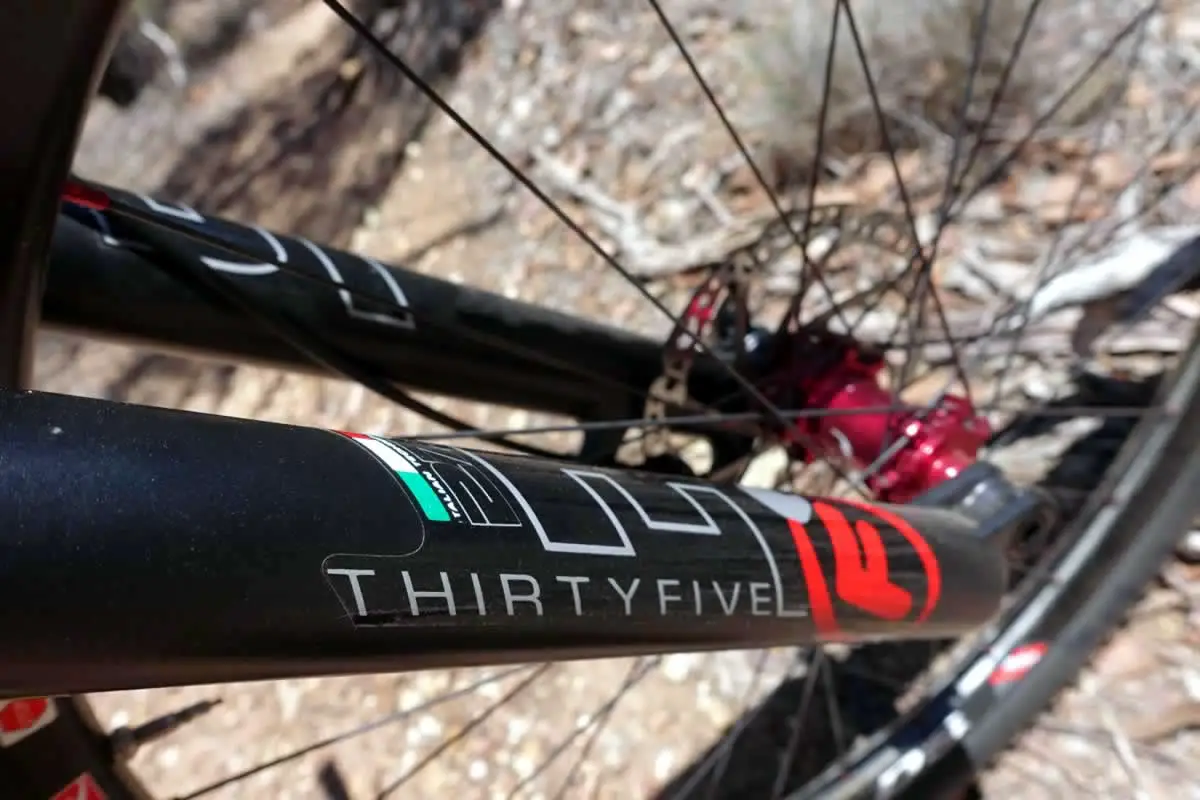
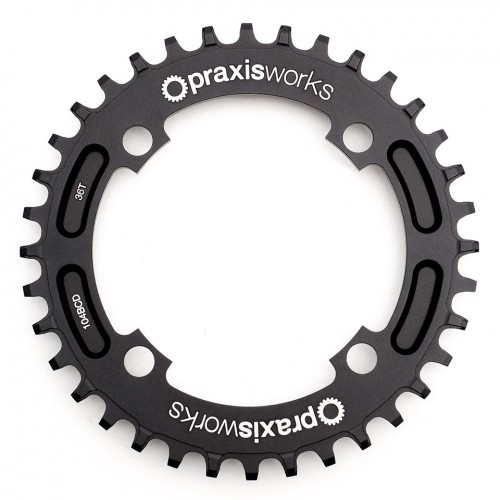
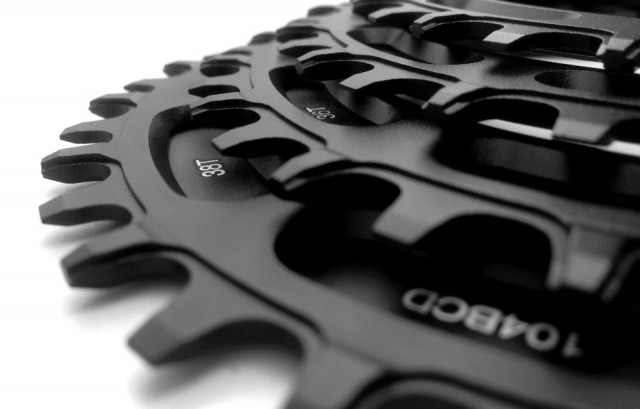
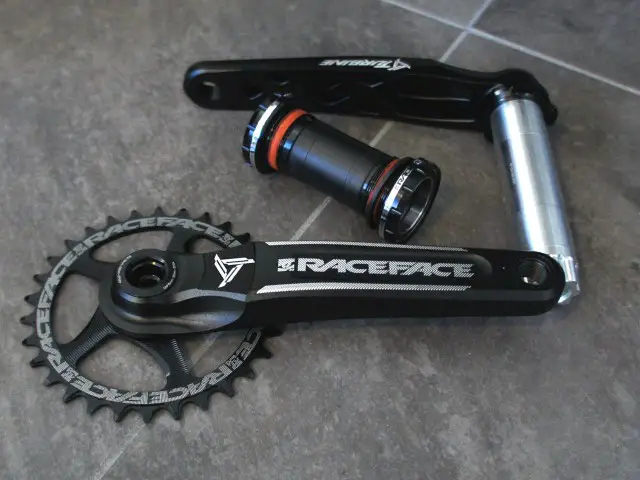
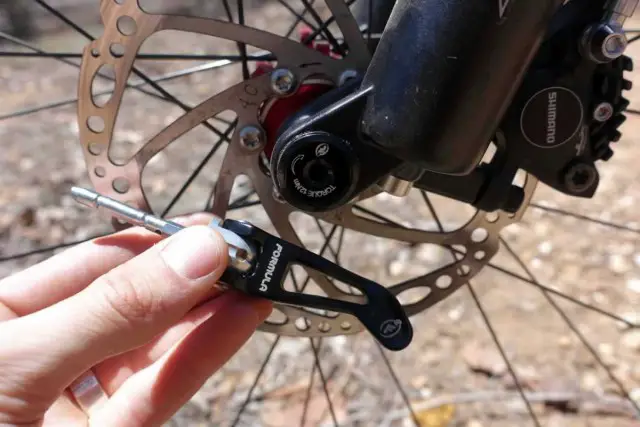
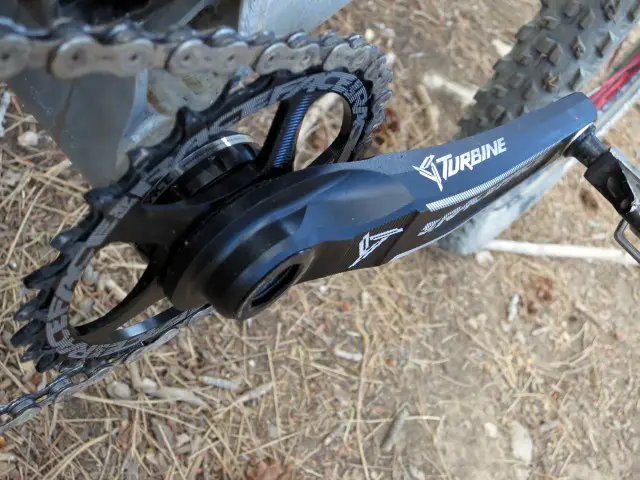
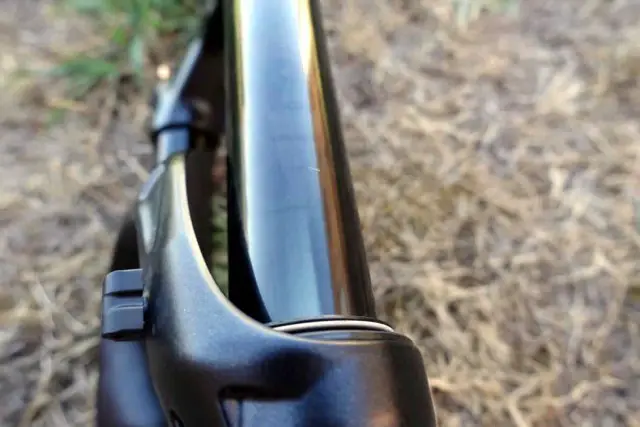
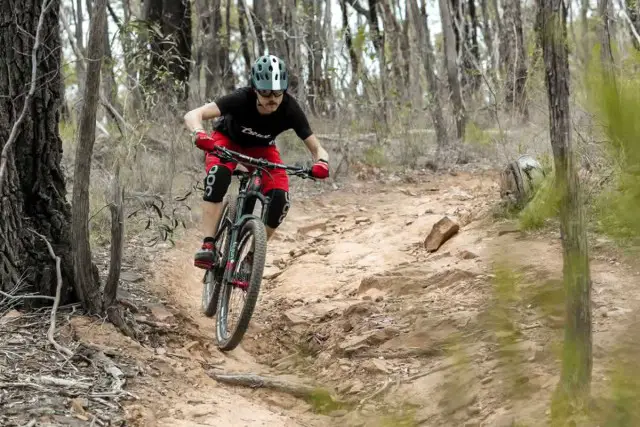

That’s a great, well-balanced, thorough review. Nice one.
Nice review but…
Reached out…..
Reached out…
Did Firmula ever get back to you? I have cause for concern here…